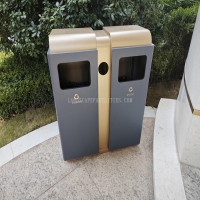Welcome to the website for landscape facilities products and knowledge.
How does the bin’s design ensure it remains easy to use in areas with limited infrastructure?
In regions with limited infrastructure, waste management can be a significant challenge. However, thoughtfully designed bins address these issues by prioritizing simplicity, durability, and adaptability.
1. Lightweight and Portable Construction: Bins made from lightweight yet sturdy materials like recycled plastics or aluminum are easy to transport and relocate, even in remote or rugged areas. Their compact size ensures they fit into spaces where larger, fixed bins cannot.
2. Minimal Maintenance Requirements: Designs often avoid complex mechanisms, such as foot pedals or sensors, which can malfunction without proper upkeep. Instead, simple lids or open-top designs reduce the risk of breakdowns and make cleaning easier.
3. Weather-Resistant Materials: Bins intended for areas with poor infrastructure are built to withstand harsh conditions, including extreme heat, rain, or dust. UV-resistant coatings and rust-proof metals extend their lifespan.
4. Ergonomic Features: Handles, rounded edges, and balanced weight distribution ensure that users can carry or empty the bin with minimal effort—critical in areas where manual handling is the norm.
5. Versatile Placement Options: Some bins include anchor points for securing them to the ground or walls, preventing theft or displacement in unstable environments. Others feature stackable designs to save space during storage or transport.
By focusing on these principles, bin manufacturers create solutions that remain functional and accessible, even in the most underserved locations. Whether in rural villages, disaster zones, or temporary settlements, smart design bridges the gap between infrastructure limitations and effective waste management.
Related search:

Recommendation
Double-bucket garbage bin, outdoor, metal, multi-color, powder-coated, double-bucket trash can